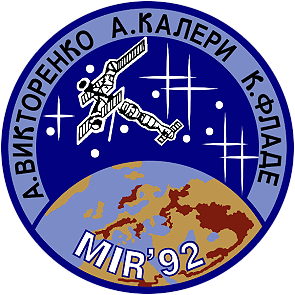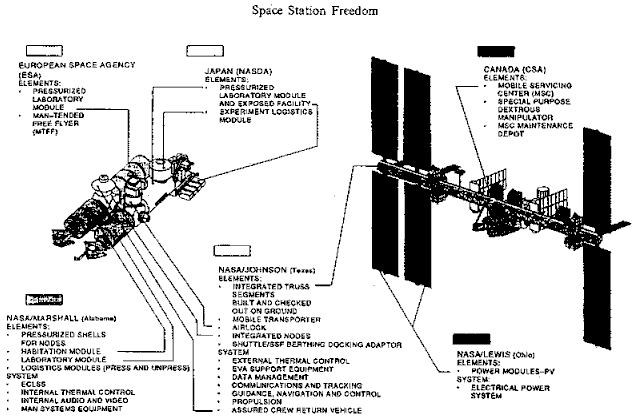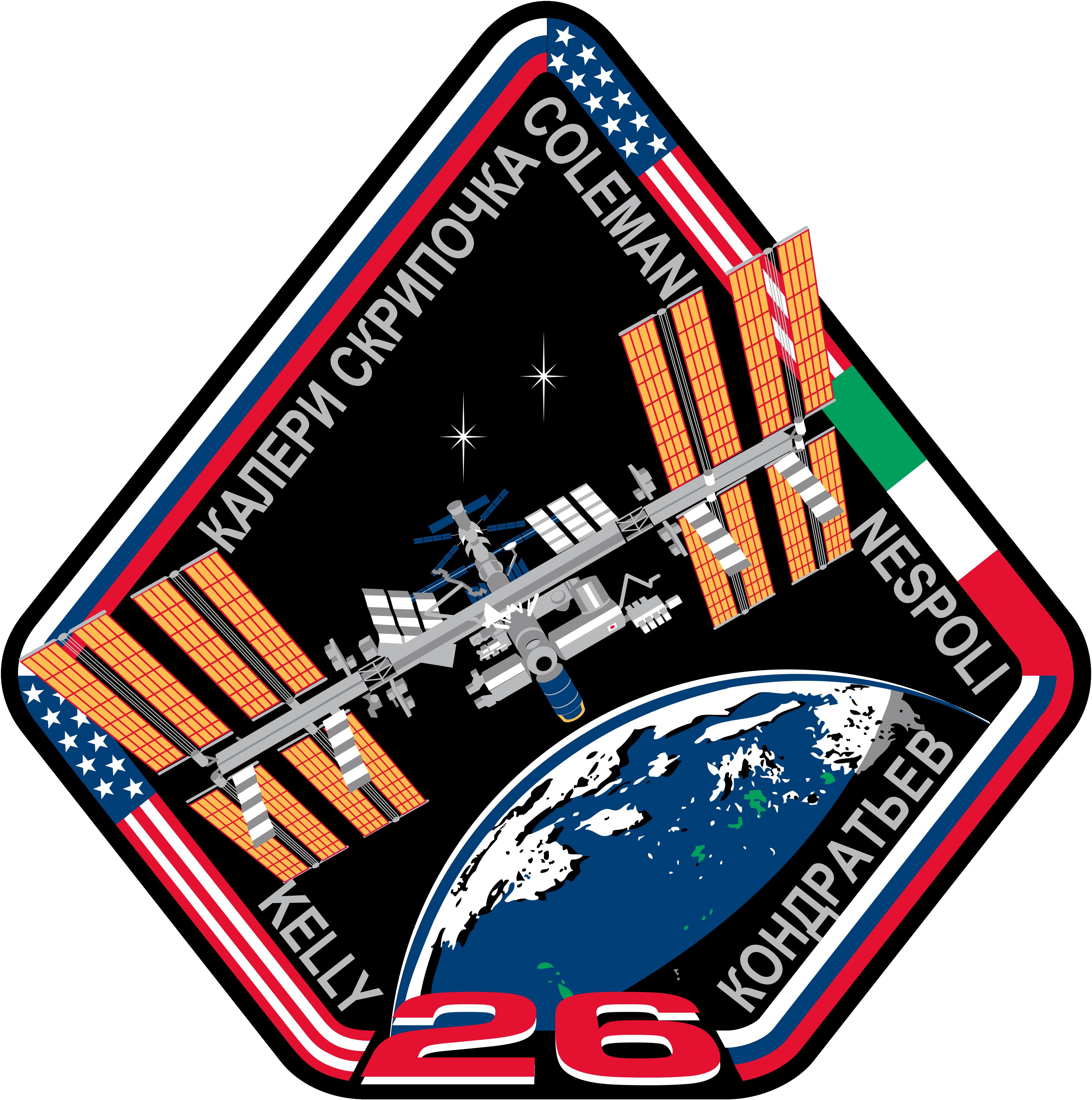|
Expedition 5
Expedition 5 was the fifth long-duration stay on the International Space Station (ISS). The crew, consisting of three people, remained in space for 184 days, 178 of which were spent aboard the ISS. Expedition 5 was a continuation of an uninterrupted human presence in space, as of November 2022, which was begun by Expedition 1 in 2000-2001. The crew of Expedition 5 launched to space aboard the Space Shuttle ''Endeavour'' aboard the STS-111 mission on 5 June 2002. Their tenure aboard the station, however, did not begin until they docked with the ISS two days later on 7 June. Crew Mission parameters *Perigee: 384 km *Apogee: 396 km *Inclination: 51.6° *Period: 92 min left, 250px, Peggy A. Whitson, Expedition Five flight engineer, wears a Russian Orlan spacesuit as she prepares for an EVA. (NASA) Mission objectives The Expedition Five crew took charge of ISS operations on 7 June 2002. An official ceremony between Expedition crews took place 10 June, with ... [...More Info...] [...Related Items...] OR: [Wikipedia] [Google] [Baidu] |
Valery Korzun
Valery Grigoryevich Korzun (russian: Валерий Григорьевич Корзун, born 5 March 1953) is a Russian cosmonaut. He has been in space twice totalling 381 days. He has also conducted four career spacewalks. Personal He is a Russian Air Force Colonel and cosmonaut of Yuri Gagarin Cosmonaut Training Center, was born on 5 March 1953 in Krasny Sulin. Korzun and his wife Elana have one son, Nikita. His father is Korzun Grigori Andreyevich, and his mother, Korzun Maria Arsentievna. His hobbies include tennis, badminton and theater. Education In 1974, Korzun graduated from the Kachinsk higher military aviation pilot school. In 1987 he graduated from the Gagarin Military Aviation Academy. Awards Korzun was awarded: * the title of Hero of Russian Federation; * the title of Pilot-Cosmonaut of the Russian Federation; * Cavalier of Legion of Honour (France). He has also been awarded with Russian and NASA medals. Experience After graduation from the Kachinsk Military ... [...More Info...] [...Related Items...] OR: [Wikipedia] [Google] [Baidu] |
Aleksandr Kaleri
Aleksandr "Sasha" Yuriyevich Kaleri (russian: Александр Юрьевич Калери; born in Jūrmala, Latvia on 13 May 1956) is a Russian cosmonaut and veteran of extended stays on the Mir Space Station and the International Space Station (ISS). Kaleri has most recently been in space aboard the ISS serving as a flight engineer for the long duration Expedition 25/ 26 missions. He has spent the fourth-longest time in space of any person, the longest time in space of any currently active cosmonaut, and the longest time in space of any person not born in what is now Russia. Personal Kaleri is married to the Svetlana L. Nosova. They have a son, Oleg Aleksandrovich Kaleri, born in 1996. Kaleri's mother, Antonina Petrovna Kaleri, resides in Sevastopol, Crimea, and his father, Yuri Borisovich Kaleri, is deceased. Kaleri enjoys running, reading and gardening. Education In 1979, Kaleri graduated from the Moscow Institute of Physics and Technology, Dolgoprudny, Moscow region, a ... [...More Info...] [...Related Items...] OR: [Wikipedia] [Google] [Baidu] |
Pressurized Mating Adapter
The Pressurized Mating Adapter (PMA) is a class of spacecraft adapters that convert the Common Berthing Mechanism (CBM) used on the US Orbital Segment to APAS-95 docking ports. There are three PMAs located on the International Space Station (ISS); the first two were launched with the ''Unity'' connecting module in 1998 aboard STS-88, and the third was launched in 2000 aboard STS-92. All three of the PMAs are now used to permanently connect parts of the ISS, so they are no longer available as docking ports for visiting spacecraft. Design/History Its origins lie in designs for the Pressurized Docking Mast, consisting of an off-axis frustoconical docking tunnel contained within a framework and a retractable coupling mechanism, later part of the Pressurized Berthing Adapter assembly that appeared in designs for Space Station Freedom 1987, and the reduced design referred to as 'Fred' 1991. After 1992-93 and the Russian integration into the International Space Station Alpha pro ... [...More Info...] [...Related Items...] OR: [Wikipedia] [Google] [Baidu] |
Zvezda (ISS Module)
''Zvezda'' (russian: Звезда, meaning "star"), ''Salyut'' DOS-8, also known as the ''Zvezda'' Service Module, is a module of the International Space Station (ISS). It was the third module launched to the station, and provided all of the station's life support systems, some of which are supplemented in the US Orbital Segment (USOS), as well as living quarters for two crew members. It is the structural and functional center of the Russian Orbital Segment (ROS), which is the Russian part of the ISS. Crew assemble here to deal with emergencies on the station. The module was manufactured in the USSR by RKK Energia, with major sub-contracting work by GKNPTs Khrunichev. ''Zvezda'' was launched on a Proton launch vehicle on 12 July 2000, and docked with the '' Zarya'' module on 26 July 2000. Origins The basic structural frame of ''Zvezda'', known as "DOS-8", was initially built in the mid-1980s to be the core of the ''Mir-2'' space station. This means that ''Zvezda'' is ... [...More Info...] [...Related Items...] OR: [Wikipedia] [Google] [Baidu] |
Coordinated Universal Time
Coordinated Universal Time or UTC is the primary time standard by which the world regulates clocks and time. It is within about one second of mean solar time (such as UT1) at 0° longitude (at the IERS Reference Meridian as the currently used prime meridian) and is not adjusted for daylight saving time. It is effectively a successor to Greenwich Mean Time (GMT). The coordination of time and frequency transmissions around the world began on 1 January 1960. UTC was first officially adopted as CCIR Recommendation 374, ''Standard-Frequency and Time-Signal Emissions'', in 1963, but the official abbreviation of UTC and the official English name of Coordinated Universal Time (along with the French equivalent) were not adopted until 1967. The system has been adjusted several times, including a brief period during which the time-coordination radio signals broadcast both UTC and "Stepped Atomic Time (SAT)" before a new UTC was adopted in 1970 and implemented in 1972. This change also a ... [...More Info...] [...Related Items...] OR: [Wikipedia] [Google] [Baidu] |
Expedition 5 EVA
Expedition may refer to: * An exploration, journey, or voyage undertaken by a group of people especially for discovery and scientific research Places * Expedition Island, a park in Green River, Wyoming, US * Expedition Range, a mountain range in Queensland, Australia Arts, entertainment, and media * ''Expedition'' (book), a science-fiction novel by Wayne Douglas Barlowe *''Expedition Magazine'', published by Penn Museum *''Expedition!'' (1960-62), an American travel documentary television series *Expedition, included in the List of Pokémon Trading Card Game sets * ''Expeditions'' (poetry collection), a collection of poetry by Margaret Atwood *''L'Expédition'', a volume of the French science fiction comic series '' Les Mondes d'Aldébaran'', part of the ''Bételgeuse'' graphic novel *''L'expédition'', a novel by Agnès Desarthe *''L'Expédition'', written by cartoonist Richard Marazano *'' Northern Exposure: Expeditions'', album by Sasha and John Digweed (1999) * L'exp ... [...More Info...] [...Related Items...] OR: [Wikipedia] [Google] [Baidu] |
Orbital Period
The orbital period (also revolution period) is the amount of time a given astronomical object takes to complete one orbit around another object. In astronomy, it usually applies to planets or asteroids orbiting the Sun, moons orbiting planets, exoplanets orbiting other stars, or binary stars. For celestial objects in general, the sidereal period ( sidereal year) is referred to by the orbital period, determined by a 360° revolution of one body around its primary, e.g. Earth around the Sun, relative to the fixed stars projected in the sky. Orbital periods can be defined in several ways. The tropical period is more particularly about the position of the parent star. It is the basis for the solar year, and respectively the calendar year. The synodic period incorporates not only the orbital relation to the parent star, but also to other celestial objects, making it not a mere different approach to the orbit of an object around its parent, but a period of orbital relations ... [...More Info...] [...Related Items...] OR: [Wikipedia] [Google] [Baidu] |
Inclination
Orbital inclination measures the tilt of an object's orbit around a celestial body. It is expressed as the angle between a Plane of reference, reference plane and the orbital plane or Axis of rotation, axis of direction of the orbiting object. For a satellite orbiting the Earth directly above the Equator, the plane of the satellite's orbit is the same as the Earth's equatorial plane, and the satellite's orbital inclination is 0°. The general case for a circular orbit is that it is tilted, spending half an orbit over the northern hemisphere and half over the southern. If the orbit swung between 20° north latitude and 20° south latitude, then its orbital inclination would be 20°. Orbits The inclination is one of the six orbital elements describing the shape and orientation of a celestial orbit. It is the angle between the orbital plane and the plane of reference, normally stated in degree (angle), degrees. For a satellite orbiting a planet, the plane of reference is usually ... [...More Info...] [...Related Items...] OR: [Wikipedia] [Google] [Baidu] |
Apogee
An apsis (; ) is the farthest or nearest point in the orbit of a planetary body about its primary body. For example, the apsides of the Earth are called the aphelion and perihelion. General description There are two apsides in any elliptic orbit. The name for each apsis is created from the prefixes ''ap-'', ''apo-'' (), or ''peri-'' (), each referring to the farthest and closest point to the primary body the affixing necessary suffix that describes the primary body in the orbit. In this case, the suffix for Earth is ''-gee'', so the apsides' names are ''apogee'' and ''perigee''. For the Sun, its suffix is ''-helion'', so the names are ''aphelion'' and ''perihelion''. According to Newton's laws of motion, all periodic orbits are ellipses. The barycenter of the two bodies may lie well within the bigger body—e.g., the Earth–Moon barycenter is about 75% of the way from Earth's center to its surface. If, compared to the larger mass, the smaller mass is negligible (e.g., f ... [...More Info...] [...Related Items...] OR: [Wikipedia] [Google] [Baidu] |
Perigee
An apsis (; ) is the farthest or nearest point in the orbit of a planetary body about its primary body. For example, the apsides of the Earth are called the aphelion and perihelion. General description There are two apsides in any elliptic orbit. The name for each apsis is created from the prefixes ''ap-'', ''apo-'' (), or ''peri-'' (), each referring to the farthest and closest point to the primary body the affixing necessary suffix that describes the primary body in the orbit. In this case, the suffix for Earth is ''-gee'', so the apsides' names are ''apogee'' and ''perigee''. For the Sun, its suffix is ''-helion'', so the names are ''aphelion'' and ''perihelion''. According to Newton's laws of motion, all periodic orbits are ellipses. The barycenter of the two bodies may lie well within the bigger body—e.g., the Earth–Moon barycenter is about 75% of the way from Earth's center to its surface. If, compared to the larger mass, the smaller mass is negligible (e.g., f ... [...More Info...] [...Related Items...] OR: [Wikipedia] [Google] [Baidu] |
Dmitri Kondratyev
Dmitri Yuryevich Kondratyev (russian: Дмитрий Юрьевич Кондратьев, born on 25 May 1969 in Irkutsk, Russia) is a retired Russian cosmonaut. He served as a crew member on the International Space Station long duration mission Expedition 27 as Commander, having also served as a Flight Engineer on Expedition 26 during the same stay in space. Kondratyev traveled to space for the first time aboard the Soyuz TMA-20 spacecraft in December 2010. Personal Kondratyev is married to Dinara, and they have a son named Vladislav. His parents, Yuri Semyonovich Kondratyev and Valentina Dmitriyevna Kondratyeva (née Zaozyornova), reside in Alma-Aty, Kazakhstan. His pastimes include computers, karate, economics and fishing. Education Kondratyev completed Yak-52 flight training at the Alma-Aty Aviation Club in 1986. In 1990, he entered the Kacha Air Force Pilot School graduating in 1990 as a pilot-engineer. In 2000, Kondratyev graduated from the Moscow State University for Eco ... [...More Info...] [...Related Items...] OR: [Wikipedia] [Google] [Baidu] |
Scott Kelly (astronaut)
Scott Joseph Kelly (born February 21, 1964) is an American engineer, retired astronaut, and naval aviator. A veteran of four space flights, Kelly commanded the International Space Station (ISS) on Expeditions 26, 45, and 46. Kelly's first spaceflight was as pilot of during STS-103 in December 1999. This was the third servicing mission to the Hubble Space Telescope, and lasted for just under eight days. Kelly's second spaceflight was as mission commander of STS-118, a 12-day Space Shuttle mission to the ISS in August 2007. Kelly's third spaceflight was as a crewmember on Expedition 25/26 on the ISS. He arrived at the ISS aboard Soyuz TMA-01M on October 9, 2010, and served as a flight engineer until he took over command of the station on November 25, 2010, at the start of Expedition 26. Expedition 26 ended on March 16, 2011, with the departure of Soyuz TMA-01M. In November 2012, Kelly and Russian cosmonaut Mikhail Kornienko were selected for a year-long mission to the I ... [...More Info...] [...Related Items...] OR: [Wikipedia] [Google] [Baidu] |





.png)
